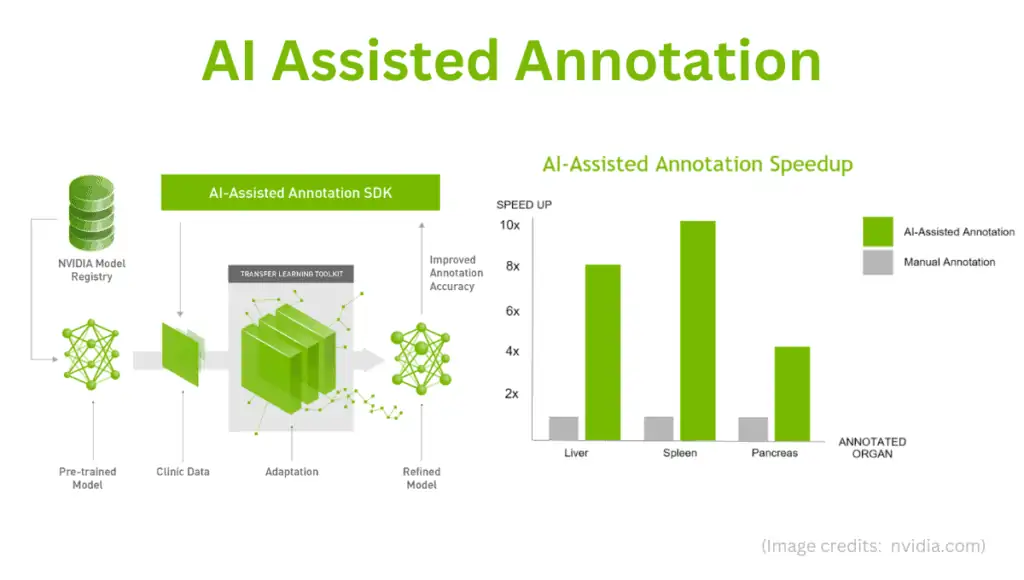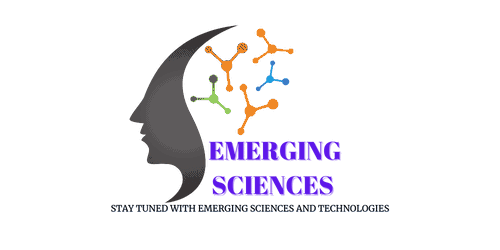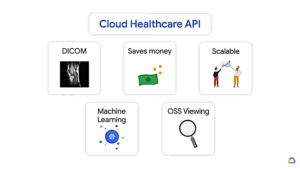In recent years, the demands for AI and deep learning greatly increased and AI assisted annotation plays a crucial role in the development and making stronger intelligence of artificial intelligence (AI) machines.
Table of Contents
ToggleThe role and impact of machine learning are immense and AI annotation is a significant offshoot. It automatically identifies and labels objects in text, images, and videos.

As we know that as like humans, computers can’t process the information on their own and each machine learning model mostly relies on the data it’s fed as well as accompanying annotation.
However, a large number of companies rely on machine learning for efficient workflows such as the ability to read and prediction of trends, and data-driven decision-making.
The AI annotation is also helping different industries greatly in manufacturing, software and development, Engineering, Finance, Cybersecurity, and medicines.
Let’s take a look at deep insights into AI annotation and how it changes the world of the deep machine learning process.
What is AI assisted annotation?
AI data annotation is the process of assigning metadata of raw data set automatically to a machine or computer by categorizing, labeling, and other contextual elements, so that machine can read, learn and act upon the fed information.
For this, a huge collection of raw data is required and the large amount of data set makes the artificial intelligence (AI) machines more intelligent and they can perform exactly human-like actions.
But the problem is the machine can only act according to the set parameters for the data set and the data annotation is the primary resolution that fulfills the gap between the sample data and AI machine learning productivity.
The AI annotation accelerates the labeling by many folds as compared to the manual process.
How AI assisted annotation Work?
For making easier for AI to generate accurate annotations of the object, AI assisted labeling tools are used by the annotators to point out the edges roughly of the object of interest.
Thereafter, the labelers review, check and makes final corrections to ensure accuracy.
Benefits of AI assisted annotations
Machine learning is heavily dependent on manual annotation for a long year. The annotated data produced by the manual annotations can come in various labels such as descriptions of texture, color, and appearance.
Gathering and preparing data is one of the time-consuming steps in the life cycle of an artificial intelligence algorithm.
A deep learning model will perform poorly without a proper data set, i.e., data that is appropriate to our task and annotated.
Data annotation also frequently referred to as data labeling is for sure the hardest and longest step, which makes applications fail or succeed.
Data labeling is the process of attaching meaning to digital data.
Therefore, AI-assisted video annotation and image annotation tools can help with image and video annotation needs.
This process is manual, but usually performed or assisted by software and requires a human touch, which is very costly, time-consuming, and requires a lot of manual labour.
The AI assisted annotation is very much helpful, when it is applied in a data annotation workflow in two ways;
Pre-annotation of dataset
The automatic data annotation process cannot annotate everything and there are some exceptions and edge cases.
It is also far from perfect without any involvement of human manpower, so it requires a manual process of review and corrections as necessary.
The human annotators should be there to review, correct and complete the process of annotations.
Reduce the amount of workload
An automatic labeling model can assign a self-confidence level based on many factors such as; use cases, task difficulty, etc.
It enriches the annotated dataset and sends the lower confident annotated data for a manual review or correction process.
It has been seen in one of the image annotation experiments, auto labeling combined with human-powered review and improvements is 10% faster than the 100% manual labeling process.
That time savings increased to 40% to 50% faster as the automation learned over time.
Uses of AI assisted image annotation
There are many applications of AI assisted image annotation that proved to be beneficial, profit-making, and even have great social impact.
These include; accessibility for the disabled, security, online shopping, medical imaging, etc.
AI assisted annotation for the visually impaired
Visual impairment poses an enormous global financial burden and it is estimated to be the US $ 411 billion annual global cost of productivity losses.
According to a report by WHO in October 2022, at least 2.2 billion people are suffering from vision impairments.
People with visual impairment face an enormous number of challenges in daily life. One of the biggest challenges is mobility and orientation i.e., the ability to walk safely and accurately from one place to another place.
Public transportation, such as buses, is the main tool for individuals to navigate and get to where they want.
Thus, people living with visual impairments can get benefit greatly from AI assisted image annotation.
Smartphones or other gadgets with cameras can be outfitted with Automatic image annotation to recognize objects and read or describe them out loud to the users.
Family members, friends, and text can also be recognized, making it easier for people with disabilities to live independent lives.
AI assisted annotation in Security
Nowadays, the demand for real-time AI camera-based object detection is greatly increased in both industries as well as public spheres.
More importantly, the public spheres become increasingly susceptible to crimes, illegal activities, and violence.
Thus, implementing artificial intelligence (AI) in surveillance and security can provide a reliable protective blanket to ease turbulence.
The AI assisted annotations of images by using computer vision can assists security personnel and law enforcement to get early warning systems to mitigate rising concerns of chaos and commotion in public.
Artificial intelligence allows security cameras to provide round-the-clock surveillance and makes much more secure and safe lives of people.
Thus, high-quality image annotations are required for creating such high-tech video equipment and their integration into the surveillance system.
The data from images and videos captured from similar cameras as well as their proper labeling are used to develop such artificial intelligence cameras.
Types of AI assisted annotations of images used in security and surveillance systems
There are various types of image annotations used for AI in security and surveillance systems;
- Bounding Boxes for Crowd Detection
- Night Vision Thermal Image Annotation
- 3D Cuboid Annotation for Traffic Motion
- Landmark Annotation for Face Detection
- Person Annotation for Theft Detection
- Point of Interest for Human Monitoring
AI assisted annotation for online shopping
Millions of people worldwide use e-commerce sites such as eBay, Aliexpress, Amazon, and Asos.
The AI solution that incorporates machine learning will improve the customer experience, and help in more conversion, revenue and profit significantly, through product information management systems (PIM).
The AI assisted annotation of images automatically analyses products, sorts them into catalogs, and generates detailed descriptions.
This saves time, reduces the workload and cost, and provides a smooth user shopping experience. The AI reacts faster than any human and can catch both micro and macro trends.
Further, the AI assisted annotation learns from the visitors’ behavior in real-time and can anticipate the visitors’ intents and adapts the search results to rank the most relevant products higher and maximizes the sales as well as revenues.
Chatbots and Augmented Reality (AR) are two examples of how AI can help to improve customers’ shopping experiences on the e-commerce site.
AI assisted Chatbots
Nowadays Chatbots are very much useful services during online shopping. They can inform the customers when the products are out of stock and showing and suggesting them alternative products.
They can also inform the customers about the status of an order, or delivery and even suggests the customers the relevant products based on customers searching interests.
Further, the Chatbots can remind customers about their abandoned shopping carts and help them complete the purchase.
According to IBM, chatbots can reduce the cost of customer service by 30%.
Augmented reality
With the help of interactive visual designs such as 3D imagery, Augmented Reality (AR), and Virtual Reality (VR), the customer can get a better sensory experience and a better understanding of what to expect with their product while shopping online.
The combination of artificial intelligence (AI) and Augmented reality provides different customer experiences such as both physical and digital experiences.
Snapchat lenses and Pokemon Go are popular examples of augmented reality.
Product types that U.S. internet users want to shop using AR;
- 60% Furniture
- 55% Clothes
- 39% Foods and beverages
- 35% Footwear
- 25% Cosmetics
- 25% Jewelry
- 22% Toys
AI-assisted annotation for medical imaging
The demand for the application of artificial intelligence in medical image analysis has drastically grown in the last few years.
Recently Google launched its new product medical imaging suite, which comprises of AI-assisted annotation environment with the help of NVIDIA and the MONAI open framework.
AI-assisted annotation has emerged to speed up annotation workflows and increase productivity in the field of medical imaging.
NVIDIA AI assisted annotation for medical imaging
The identification and analysis of specific features in medical images slow down due to the growing volume of clinical data in medical imaging.
This reduces the speed of data annotation as well as enhances the cost and slows down the diagnosis process.
Sometimes due to the unavailability of well-trained medical personnel, the patients get suffered from the improper diagnoses.
Therefore, the applications of annotation tools in medical imaging greatly help radiologists to annotate organs as well as abnormalities.
These applications comprise software tools to isolate the organs of interest from the rest of the dataset and typically operate on 2D slices.
A radiologist takes a single 2D image slice from a patient’s scan and marks annotation boundaries and corrections as needed.
This manual process repeats for the next slice in which the organ of interest is annotated and corrected again.
Some applications also support 3D tools for annotation with region-growing techniques that perform fairly well with certain organs but poorly on other organs.
As these workflows are completely manual, the annotation process takes a lot of time.
However, NVIDIA AI assisted annotation enables deep learning-based applications. It provides the tools which speed up the annotation process, as a result, it greatly helps radiologists in terms of saving time, and increasing productivity.
Related: Deep Insights of Google Cloud Medical Imaging Suite

Here we have put a video found on YouTube by NVIDIA Developer, you can check it.
AI assisted annotation by MONAI label
The MONAI stands for Medical Open Network for Artificial Intelligence.
MONAI label is an intelligent open-source medical image labeling and learning tool, which enables the creation of annotated data sets and the building of AI assisted annotation models quickly.
A typical manual annotation workflow can be a tedious time-consuming task, which is prone to observer variation.
To help address this issue, MONAI label help to reduce the time and effort of annotating new data sets and enables the adaption of AI to the clinical task at hand by continuously learning from user interactions and data.
MONAI label powers an AI assisted annotation experience, allowing researchers and developers to make continuous improvements to their application with iterative feedback from the clinicians, who are the end users of this application.
Here we have put a video available on YouTube by Project MONAI, kindly check it.
AI assisted annotation tools and companies
The AI assisted annotation tools to provide sufficient time to finetune machine learning models and speed up the workflow by reducing manual labeling efforts.
It also accelerates computer vision projects by cutting down data preparation time by up to 50%.
But optimizing the data annotation process is a crucial step for getting high performance and reliability of the machine learning model.
So, selecting the right annotation tool for computer vision projects is a crucial decision and should not be taken lightly.
Here we have described some of the popular image annotation tools;















